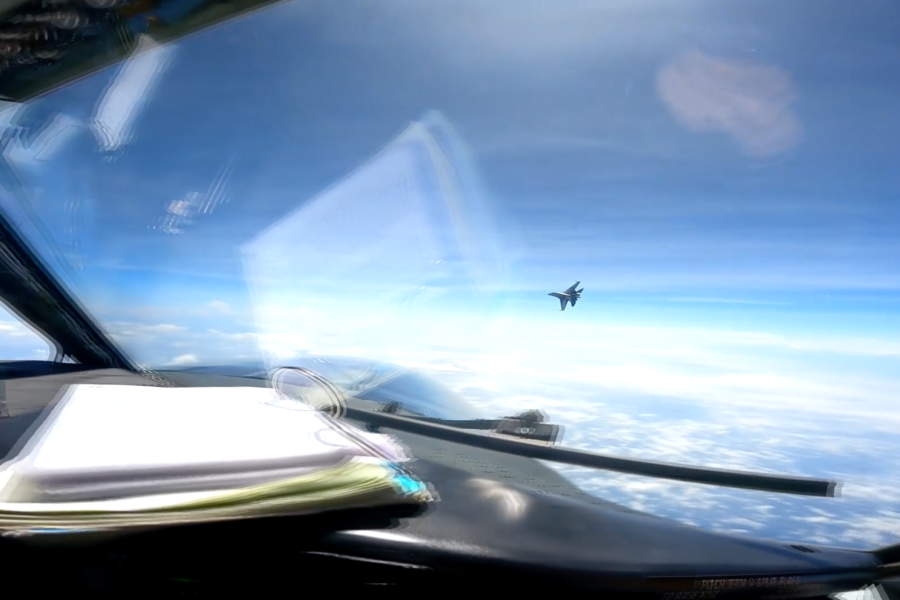A Chinese fighter jet conducted an “unnecessarily aggressive” maneuver in front of a U.S. Air Force RC-135 last week, U.S. Indo-Pacific Command announced May 30, and released footage of the incident.
The intercept, which took place May 26, happened over the South China Sea in international airspace, according to an INDOPACOM statement.
The video shows the J-16 fighter passing directly in front of the RC-135 Rivet Joint. That caused the American jet to fly through the Chinese fighter’s wake turbulence. Footage released by the U.S. shows the USAF plane appearing to shake after the maneuver.
“The United States will continue to fly, sail, and operate—safely and responsibly—wherever international law allows, and the U.S. Indo-Pacific Joint Force will continue to fly in international airspace with due regard for the safety of all vessels and aircraft under international law,” INDOPACOM said in a statement. “We expect all countries in the Indo-Pacific region to use international airspace safely and in accordance with international law.”
This marks the second time the U.S. has accused Chinese pilots of unsafe actions over the South China Sea—on Dec. 21, a Chinese People’s Liberation Army-Navy (PLAN) J-11 fighter “performed an unsafe maneuver” and came within 20 feet of another RC-135.
The Pentagon released video of that incident as well, while the Chinese government later claimed the slower-flying RC-135 altered its flight and veered toward the PLAN fighter, though footage the Chinese released does not appear to show that.
In 2015, a similar incident took place involving an RC-135 and two Chinese JH-7 aircraft, though officials said at the time there was no imminent threat of a collision.
The Pentagon has increasingly used unclassified video to spotlight what it calls unsafe behavior by adversaries like China and Russia—in March, the department released footage from an MQ-9 Reaper drone showing a Russian jet dumping fuel in front of it, then crashing into the aircraft, which resulted in the American plane crashing into the Black Sea.
Formal communications about such behavior have broken down, though. The Chinese government in particular has shown a “concerning lack of interest in the important lines of communication that underpin a stable defense relationship between our countries,” principal deputy assistant secretary of defense for Indo-Pacific security affairs Jedidiah P. Royal told Congress in April.
It has been months since Secretary of Defense Lloyd J. Austin III last spoke to his Chinese counterpart. On May 29, the Pentagon said that China—officially the People’s Republic of China or PRC—rebuffed a potential meeting during Austin’s upcoming visit for an annual security forum in Singapore.
“This is far from the first time that the PRC has rejected invitations to communicate from the Secretary, the Chairman of the Joint Chiefs of Staff, or other Department officials,” a senior defense official told Air & Space Forces Magazine. “Frankly, it’s just the latest in a litany of excuses. Since 2021, the PRC has declined or failed to respond to over a dozen requests from the Department of Defense for key leader engagements, multiple requests for standing dialogues, and nearly ten working-level engagements.”
It was not immediately clear if the U.S. and Chinese militaries have had any contact since this most recent incident.
China has shown “concerning unwillingness to engage in meaningful military-to-military discussions,” Pentagon Press Secretary Brig. Gen. Patrick S. Ryder said in a statement to Air & Space Forces Magazine May 29.


